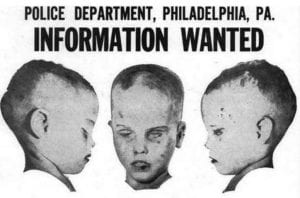Entry Eight: Amelia Earhart
While most of our previously mentioned cold cases involve the deaths of John Doe’s and names unknown to most, even the most notorious and well-known names and figures cannot escape become another unsolved case. Once investigators have thrown in the towel due to lack of evidence, or too much time being past, once a case has been deemed “cold”, it is in a sense “frozen”, never to be thawed. The hopelessness aspect can scare away new investigators and theorists, but for some, the added challenge provides increased motivation for bringing justice to the families.
Our next victim’s name is one that is unforgettable. Hailed for her contributions to the feminist movement and her achievements in aviation, the disappearance and death of Amelia Earhart has puzzled government officials and fans for nearly a decade.
1937: Earhart’s attempt to become the first person to circumnavigate the globe would be her final flight. Known already for becoming the first female pilot to fly across the Atlantic Ocean, Earhart was poised to become a national icon, further cementing her name in the record books.
Along with a top-rated crew of three men, (Captain Harry Manning, Fred Noonan, and Paul Mantz) Earhart began to plan for their voyage. The plan was to take off from Oakland, California, and fly west to Hawaii. From there, the group would fly across the Pacific Ocean to Australia. Then they would cross India, on to Africa, then to Florida, and back to California. After landing in Pearl Harbor for some repairs, they began another takeoff, but something went wrong. Earhart lost control and looped the plane on the runway. Several witnesses, including an Associated Press journalist, said they saw a tire blow, while other sources, including Paul Mantz, indicated it was pilot error. Though no one was seriously hurt, the plane was severely damaged and had to be shipped back to California for extensive repairs, and the original flight was cancelled.
By the time the plane was repaired, weather patterns and global wind changes required alterations to the flight plan. Due to previous commitments and contract disputes, Captain Harry Manning and Paul Mantz would not join the team on the second attempt.
After flying from Oakland to Miami, Florida, Earhart and Noonan took off on June 1st from Miami with much fanfare and publicity. The plane flew toward Central and South America, turning east for Africa. From there, the plane crossed the Indian Ocean and finally touched down in Lae, New Guinea, on June 29, 1937. About 22,000 miles of the journey had been completed. The remaining 7,000 miles would take place over the Pacific.
Bad luck continued to plague the second voyage.
Though the flyers seemed to have a well thought-out plan, several early decisions led to grave consequences later on. Radio equipment with shorter wavelength frequencies were left behind, presumably to allow more room for fuel canisters. This equipment could broadcast radio signals farther distances. Due to inadequate quantities of high-octane fuel, the Electra carried about 1,000 gallons — 50 gallons short of full capacity. Witnesses to the takeoff reported that a radio antenna may have been damaged, and according to experts, evidence shows that the charts used by Noonan and Earhart placed Howland Island (one of their destinations) nearly six miles off its actual position.
Amelia Earhart. 1937. “Amelia Earhart: AMERICAN AVIATOR,” by The Editors of Encyclopaedia Britannica. Encyclopedia Britannica. Accessed 30 Oct. 2019.
At 7:42 AM, radio control picked up this message from Earhart: “We must be on you, but we cannot see you. Fuel is running low. Been unable to reach you by radio. We are flying at 1,000 feet.” This would be the final message received from Earhart.
Despite the efforts of 66 aircraft and nine ships and an estimated $4 million rescue authorized by President Franklin D. Roosevelt, the fate of the two flyers remained a mystery. Theorists believe that Earhart and Noonan might have flown without radio transmission for some time after their last radio signal, landing at uninhabited Nikumaroro reef, a tiny island in the Pacific Ocean 350 miles southeast of Howland Island. Based on several on-site investigations that have turned up artifacts such as improvised tools, including bits of clothing, an aluminum panel, and a piece of Plexiglas the exact width and curvature of an Electra window, many believe they crashed on to the island, either dying in the crash or dying several days later.
Analysis of radio distress signals sent by Earhart in the days after her disappearance have revealed that she may have survived the crash and continued to send messages. Various citizens documented the reception of messages from Earhart via radio. On July 4, two days after the crash, a San Francisco resident heard a voice from the radio saying, “Still alive. Better hurry. Tell husband all right.” Three says later, someone in eastern Canada picked up the message, “Can you read me? Can you read me? This is Amelia Earhart … please come in.”
While the ultimate fate of Earhart remains to be unknown, it is certain that her death was an incredible loss, and losing her at such a prime time in her career only adds salt to the wound.
As always, the BuzzFeed Unsolved video delving more in depth with theories (including the theory that she survived the crash and was taken as a prisoner of war) is included for further reading here. Best of luck in your theorizing, until next week.




